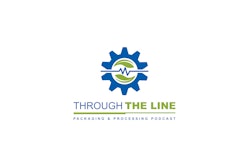Detection360 includes four phases: Discovery, Mapping, Integration and Performance. During Phase One, Anritsu's technical sales team learns and understands the vision of your current and future quality control program, identifying needs and reviewing quality concerns to define all inspection opportunities and production line details throughout every aspect of production and packaging processes, which allows an accurate assessment of risk from physical contaminants or fill/packaging issues.
Phase Two involves Inspection technology being “Mapped” throughout processing and packaging lines a focus on correctly and effectively applying advanced technology to resolve high-priority quality concerns and advance the product quality.
During Phase Three, Anritsu integrates and commissions the technology and solutions from its broad range of standard and semi-custom equipment offerings with a focus to advance current quality control programs by maximizing detection and inspection capabilities.
Phase Four, consists of Performa360, a new line of Service, Training and Performance Assurance programs to help assure the performance of equipment after installation. During this phase, the company helps protect and assure the performance of its X-ray, checkweigher, and/or metal detection equipment and technology.





















